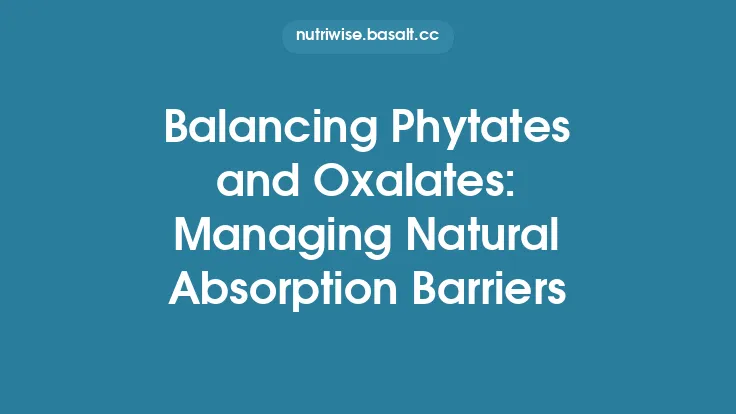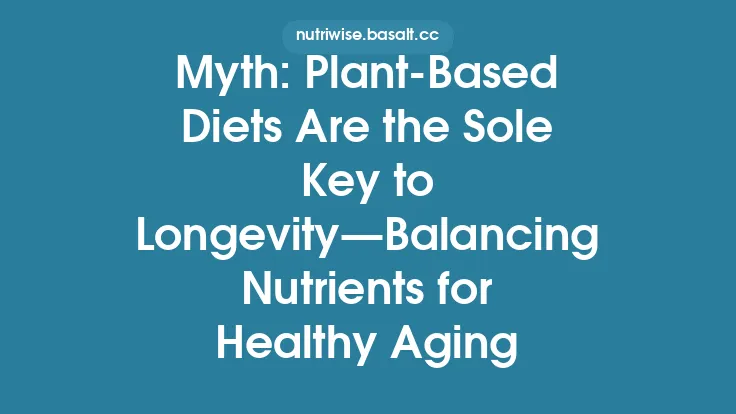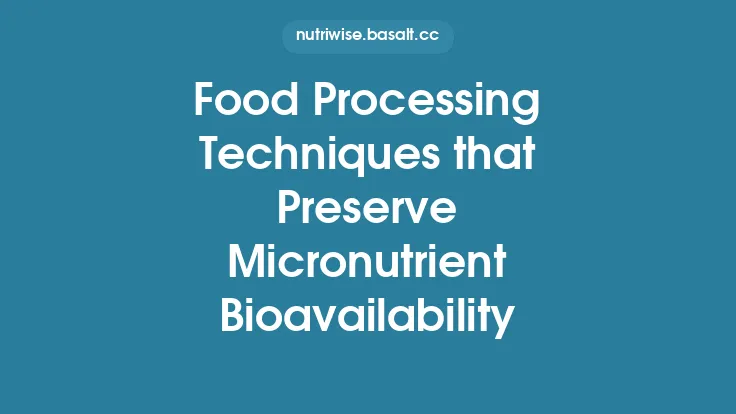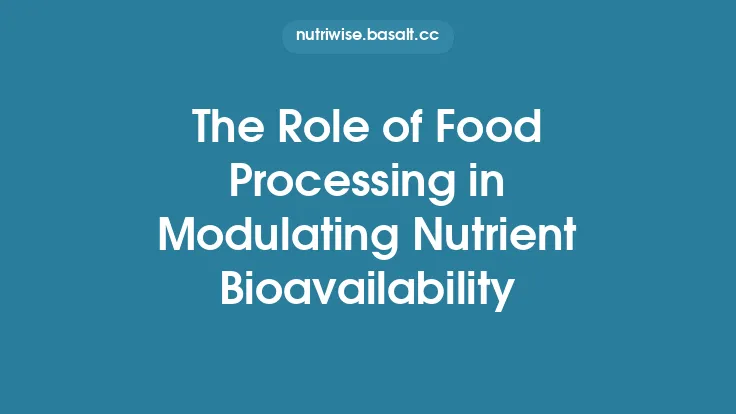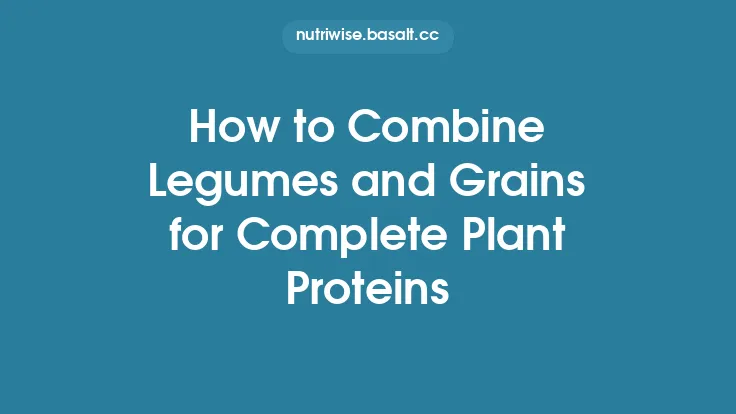Plant foods are a cornerstone of healthy diets worldwide, offering fiber, phytochemicals, and essential minerals such as iron, zinc, calcium, and magnesium. However, the presence of phytic acid (myo‑inositol hexakisphosphate, commonly called phytate) in many seeds, legumes, nuts, and whole grains can markedly diminish the bioavailability of these minerals. Understanding how phytate interacts with minerals and how to manage its levels in the diet is crucial for maximizing the nutritional value of plant‑based foods without compromising their health‑promoting properties.
Phytate Chemistry and Its Role in Plants
Phytate is the principal storage form of phosphorus in seeds, accounting for up to 80 % of total seed phosphorus. Its highly negatively charged phosphate groups enable strong chelation of positively charged mineral ions (e.g., Fe²⁺/Fe³⁺, Zn²⁺, Ca²⁺, Mg²⁺). In the plant, this chelation serves two purposes: it sequesters phosphorus for germination and protects minerals from oxidative damage. The same chelating capacity, however, can render minerals insoluble in the human gastrointestinal tract, forming complexes that are poorly absorbed.
Key points about phytate structure:
- Six phosphate groups confer a high charge density (−12 at physiological pH).
- The molecule can adopt multiple conformations, allowing simultaneous binding of several metal ions.
- Phytate is relatively resistant to hydrolysis under neutral pH, but specific enzymes (phytases) can cleave phosphate groups, reducing its chelating power.
Mechanisms of Phytate–Mineral Interactions in the Gut
When plant foods containing phytate reach the small intestine, several processes determine whether minerals become bioavailable:
- Complex Formation: Phytate binds divalent and trivalent cations, forming insoluble phytate–mineral complexes that precipitate or remain in the lumen. The solubility product (K_sp) of these complexes is especially low for iron and zinc, making them the most affected.
- pH Dependence: The gastric environment (pH ≈ 1–3) can partially dissociate phytate, but the majority of complexes persist into the duodenum where the pH rises to 6–7, favoring precipitation.
- Competition with Other Ligands: Dietary components such as ascorbic acid, organic acids (e.g., citric, malic), and certain amino acids can compete with phytate for mineral binding, partially rescuing absorption.
- Enzymatic Hydrolysis: Endogenous phytases (produced by the pancreas and intestinal microbiota) and exogenous phytases (from food processing or microbial fermentation) can hydrolyze phytate, releasing phosphate groups and reducing its chelating capacity.
The net effect of these mechanisms is a reduction in the fractional absorption of minerals, often ranging from 30 % to 80 % depending on the food matrix and processing history.
Strategies to Reduce Phytate Content in Foods
*Soaking* – Immersing legumes, grains, or nuts in water for 6–24 hours activates endogenous phytases. The optimal soaking temperature (30–45 °C) balances enzyme activity with microbial safety. Discarding the soaking water removes solubilized phytate and some mineral complexes.
*Sprouting (Germination)* – Initiating germination triggers a surge in phytase activity as the seed prepares for growth. Sprouting for 24–72 hours can lower phytate levels by 30–70 % while simultaneously increasing the bioavailability of iron, zinc, and calcium. Light exposure during sprouting can further enhance vitamin C synthesis, indirectly supporting mineral absorption.
*Fermentation* – Lactic acid bacteria (LAB) and certain yeasts produce phytases during fermentation. Traditional processes such as sourdough bread making, tempeh production, and fermented porridges can reduce phytate by up to 80 %. The acidic environment also improves mineral solubility.
*Heat Treatment* – Conventional cooking (boiling, steaming) alone has limited impact on phytate because the molecule is heat‑stable. However, combined heat with moisture (e.g., pressure cooking) can facilitate phytate leaching into cooking water. Retaining the cooking liquid (as in soups or stews) preserves the leached minerals.
*Enzyme Supplementation* – Commercial phytase preparations (derived from Aspergillus niger or fungal sources) can be added during food processing or directly to meals. Doses of 500–1,000 FTU (phytase units) per kilogram of food have been shown to achieve significant phytate degradation in laboratory trials.
Enhancing Endogenous Phytase Activity
Plants naturally contain phytases, but their activity varies among species and cultivars. Strategies to boost endogenous phytase include:
- Selection of High‑Phytase Varieties – Certain wheat, barley, and soybean lines exhibit up to threefold higher phytase activity. Breeding programs can prioritize these traits without compromising yield.
- Pre‑Harvest Stress – Mild drought or nutrient limitation can up‑regulate phytase expression in seeds, though the effect is modest and must be balanced against agronomic performance.
- Post‑Harvest Storage Conditions – Storing grains at moderate humidity (≈ 12 %) and temperature (≈ 20 °C) preserves phytase activity. Excessive drying or freezing can denature the enzyme.
Food Processing Techniques that Modulate Phytate–Mineral Balance
| Technique | Primary Effect on Phytate | Impact on Mineral Bioavailability |
|---|---|---|
| Soaking (cold) | Activates seed phytases; leaches soluble phytate | ↑ Fe, Zn, Ca absorption (30–50 % improvement) |
| Sprouting | Massive phytase surge; structural changes in seed matrix | ↑ Fe, Zn, Ca (up to 2‑fold) |
| Fermentation (LAB) | Microbial phytase production; acidification | ↑ Fe, Zn, Ca; also improves protein digestibility |
| Pressure cooking | Heat + moisture facilitate phytate leaching | Moderate ↑ mineral uptake if cooking liquid retained |
| Extrusion (high‑temp, short‑time) | Partial phytate breakdown; may denature phytase | Variable; often requires enzyme addition |
| Enzyme fortification | Direct phytate hydrolysis | Consistent ↑ mineral bioavailability across formats |
Choosing the appropriate technique depends on the target food product, consumer preferences, and industrial feasibility.
Agricultural Approaches to Lower Phytate Levels
*Low‑Phytate (lpa) Mutants* – Naturally occurring or induced mutations in genes encoding phytate biosynthetic enzymes (e.g., MIPS, IPK1) produce seeds with 30–70 % less phytate. While promising, some lpa lines exhibit reduced seed vigor or germination rates, necessitating careful cultivar selection.
*Biofortification* – Simultaneous breeding for higher mineral density (e.g., iron‑rich beans) and lower phytate can synergistically improve net mineral intake. Marker‑assisted selection accelerates the stacking of these traits.
*Soil Management* – Adequate phosphorus fertilization reduces the plant’s need to store excess phosphorus as phytate, modestly lowering seed phytate content. However, excessive phosphorus can have environmental drawbacks, so balanced agronomy is essential.
Dietary Strategies for Balancing Phytates and Minerals
- Combine High‑Phytate Foods with Mineral‑Enhancing Components – Pair legumes or whole grains with vitamin C‑rich fruits or vegetables (e.g., bell peppers, citrus) to improve non‑heme iron absorption. While this touches on iron, the focus remains on the phytate–mineral interaction rather than cooking methods.
- Stagger Consumption of High‑Phytate and High‑Mineral Meals – Allowing a 2‑hour interval between a phytate‑dense meal and a mineral‑rich meal can reduce competitive binding in the gut.
- Utilize Fermented Condiments – Adding fermented soy sauce, miso, or kimchi to meals introduces microbial phytases and organic acids that aid mineral solubilization.
- Incorporate Sprouted Grains and Legumes – Regular inclusion of sprouted breads, crackers, or salads provides a natural reduction in phytate without additional processing steps.
- Mindful Use of Mineral Supplements – When supplementing iron or zinc, consider taking them between meals rather than with phytate‑rich foods to avoid complex formation.
Considerations for Specific Populations
*Vegetarians and Vegans* – Rely heavily on phytate‑containing foods; thus, employing soaking, sprouting, and fermentation is especially important to meet iron and zinc requirements.
*Children and Adolescents* – Rapid growth increases mineral needs. Incorporating low‑phytate grain products (e.g., refined rice in moderation) alongside sprouted legumes can help meet these demands while preserving fiber intake.
*Older Adults* – Age‑related declines in gastric acidity can exacerbate phytate‑induced mineral malabsorption. Strategies that pre‑hydrolyze phytate (e.g., fermented foods) become more valuable.
Practical Recommendations for Home Cooks and the Food Industry
*Home Cooks*
- Soak beans overnight, discard the water, and rinse before cooking.
- Sprout seeds for 2–3 days; rinse twice daily to prevent spoilage.
- Use sourdough starters for bread; longer fermentation (≥ 12 h) yields lower phytate.
- Retain cooking liquids (e.g., bean broth) to capture leached minerals.
*Food Industry*
- Integrate controlled fermentation steps (e.g., LAB inoculation) into product lines.
- Offer pre‑soaked or sprouted grain mixes to reduce consumer preparation time.
- Apply phytase enzyme treatments during processing of canned legumes and ready‑to‑eat meals.
- Develop labeling that highlights “reduced phytate” or “enhanced mineral bioavailability” to inform health‑conscious consumers.
Future Research Directions
- Precision Breeding for Optimized Phytase Expression – Leveraging CRISPR/Cas9 to up‑regulate seed phytase without compromising agronomic traits.
- Synergistic Enzyme Cocktails – Combining phytase with other carbohydrases (e.g., xylanase) to improve overall nutrient release.
- Gut Microbiome Modulation – Investigating probiotic strains that produce high phytase activity and can colonize the colon, offering a secondary site for phytate degradation.
- In‑Vivo Kinetic Modeling – Developing physiologically based pharmacokinetic (PBPK) models that predict mineral absorption under varying phytate loads and dietary patterns.
- Consumer Acceptance Studies – Assessing sensory impacts of phytate‑reduction techniques (e.g., sprouting, fermentation) to ensure widespread adoption.
Conclusion
Phytate is a double‑edged sword: essential for seed development yet a potent inhibitor of mineral absorption in humans. By understanding its chemistry, the mechanisms of mineral chelation, and the array of agronomic, processing, and dietary tools available, we can strategically balance phytate levels to unlock the full nutritional potential of plant foods. Implementing a combination of soaking, sprouting, fermentation, enzyme supplementation, and low‑phytate crop development offers a robust, evergreen framework for enhancing mineral bioavailability without sacrificing the health benefits inherent to whole‑food plant diets.
